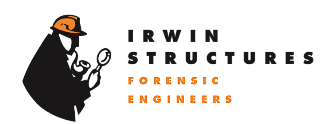BUILDING INVESTIGATIONS
Most building investigation starts with a visual inspection supported by reference to available documents. Most parts of buildings key to structural investigation are observable or measurable so in many cases all that is required is an appropriate inspection. Common areas not generally visible, include reinforcement in the concrete and foundations and footings below ground.
Original Permit Documentation
Original permit documentation, even for some very old buildings can often be obtained from the municipal building department archive subject to owner's permission to access the file. Originally approved drawings are normally recovered, records of changes made during construction are often not documented.
Concrete Reinforcement
Concrete reinforcement can be revealed by destructive investigation or scanned by electromagnetic means with varying degrees of detail according to the requirements of the investigation and equipment employed. The grade of reinforcement can often be divined by its appearance, spacing or mesh or simply the age of the building. Such investigations are time consuming and can be expensive and are usually only applied in key areas after appropriate analysis has narrowed down the information required.
Foundations and Footings
Investigations of foundations and footings are often required as this is a common problem area. Geotechnical foundation investigation is a broad and diverse field of expertise and Irwin Structures works closely with experts in that field when such investigation is required.
Most commonly a foundation investigation will be seeking the reason for abnormal movement of a building that is likely to relate to the moisture content of the foundation material and its physical properties that invariably change with depth and often vary across a site. Investigation of footings is usually aimed at establishing if a footing of suitable proportions exist and what can be done to remedy it by underpinning, for instance.
Below ground investigations to look for cracks in footings are rarely attempted for practical reasons.
Walls
Timber and steel members in walls can be assessed by external measurements, magnetic or capacitance differential scanning.
Analysis and Reporting
Armed with key information from site and documentations the forensic engineer can then retreat to his office to tackle necessary analysis and reporting.
